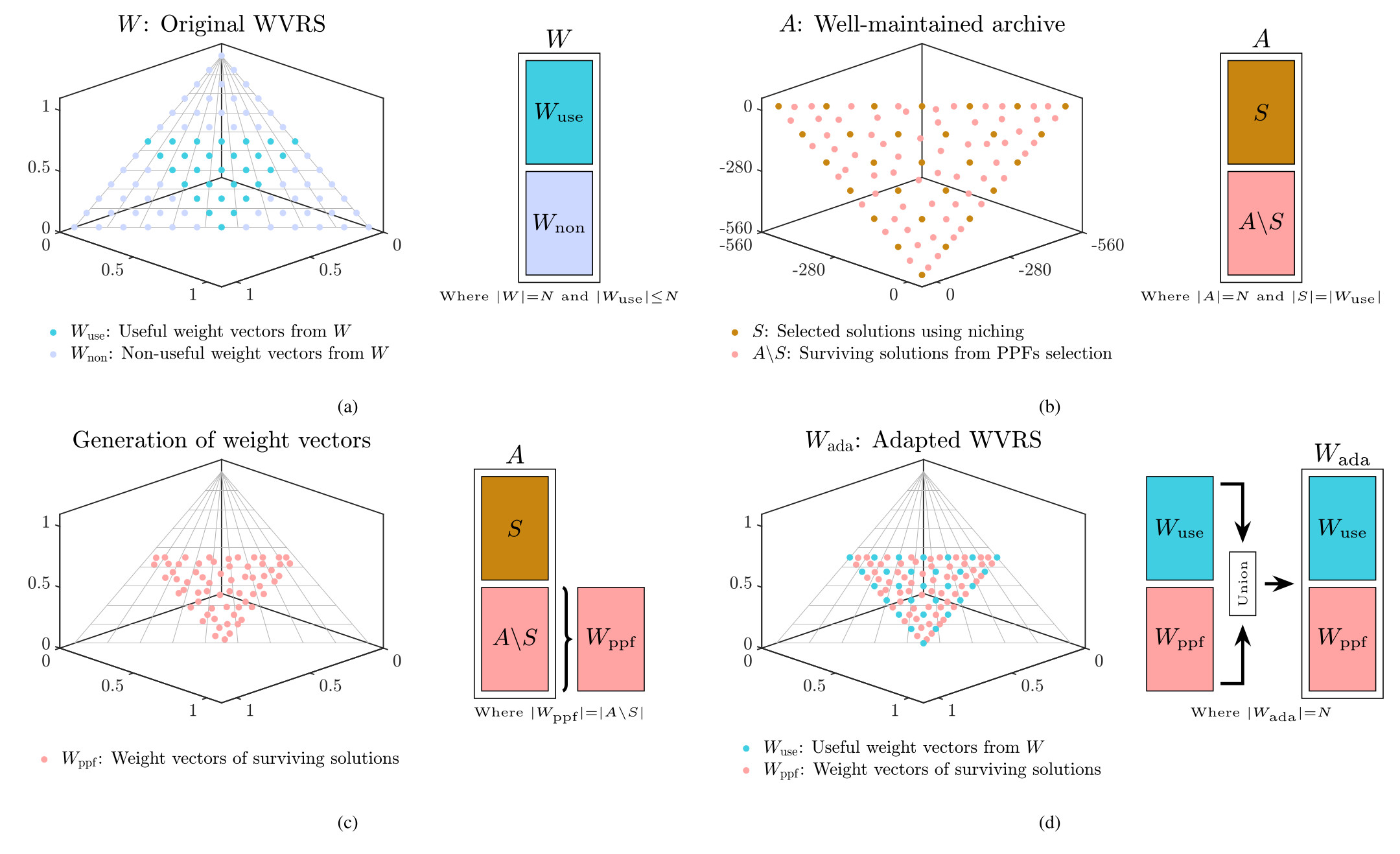On the adaptation of reference sets using niching and pair-potential energy functions for multi-objective optimization
Project information
- Category: Multi-Objective Optimization
- Project date: 12 January, 2023
- Project URL: On the adaptation of reference sets using niching and pair-potential energy functions for multi-objective optimization
- Project Code: AdaK
Project Description
In this paper, we proposed a pluggable reference set adaptation method based on niching and pair-potential energy functions (PPFs), called AdaK, to enhance the performance of different Multi-Objective Evolutionary Algorithms (MOEAs) on Multi-Objective Problems (MOPs) with irregular pareto front (PF) shapes while maintaining their good behavior on MOPs with regular PF shapes.
Our adaptation method was validated by plugging it into three well-known MOEAs that use a predefined weight vector-based reference set. We perform an empirical study using different PPFs for our adaptation method on the DTLZ, WFG, Minus-DTLZ, Minus-WFG, IMOP, and VNT test suites.
Our experimental results show the capability of our adaptation method to promote an invariant performance regardless of the PF shape. Additionally, we show that MOEAs with our adaptation method have a competitive performance against state-of-the-art MOEAs.


